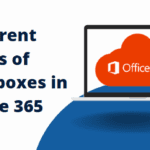The growth of data creation and replication in recent years has been nothing short of astounding. According to the IDC’s Global DataSphere Forecast, 2021-2025, the world is set to witness a remarkable compound annual growth rate (CAGR) of 23% in global data, reaching a staggering 181 zettabytes by 2025. To put this into perspective, this monumental leap from 64.2 zettabytes in 2020, and an even more astonishing tenfold increase from 6.5 zettabytes in 2012, is on the horizon.
Now, before we get lost in the sea of zeros, let’s unpack what this means. A single zettabyte amounts to a mind-boggling 1,000,000,000,000,000,000,000 bytes, or, for a more relatable comparison, around 250 billion DVDs. That’s an astronomical amount of data by any measure.
But what exactly is driving this exponential growth? Where will this influx of data find its home? How will we harness its potential? These are questions that beckon the attention of data professionals worldwide.
Data Usage Over Time
Let’s take a nostalgic journey back to 2010, when a mere 2 zettabytes of data were created and replicated across the globe. As the diversity and demand for data escalated, the pace of its expansion accelerated.
However, a noteworthy aspect to consider is that while a significant amount of data is generated and replicated, only a fraction of it finds its way into storage. For instance, the surge observed in 2020 can be attributed to increased remote work, online learning, and entertainment activities due to the global situation.
Surprisingly, less than 2% of this new data was preserved, with the rest being created for immediate consumption or temporary caching.

Data Storage and the Challenge Ahead
It’s not just data usage that demands attention; storage capacity is equally pertinent. The IDC’s DataSphere Forecast is complemented by the Global StorageSphere Forecast, 2021-25, which evaluates storage utilisation and annual storage capacity.
In 2020, the installed base of global storage capacity stood at 6.7 zettabytes, with IDC predicting a five-year CAGR of 19.2%:
While this somewhat alleviates concerns about accommodating the surge in data creation, it’s clear that storage capacity must grow by a staggering 240% over the next five years. Whether on-premises or in the cloud, this substantial expansion in infrastructure and servers necessitates effective management and monitoring.

The Changing Landscape of Data
As data expands in volume, its nature and distribution are undergoing a transformation. The surge of unstructured and semi-structured data, also known as big data, alongside structured data, is reshaping the data network. IDC forecasts that by 2025, a striking 80% of global data will be unstructured, reflecting evolving usage patterns:
The location of data is also undergoing a shift. Data is found at endpoints, where devices like mobiles, IoT devices, and sensors reside; at the edge, encompassing regional offices and smaller data centres; and at the Core, where most processing and analytics are conducted. This hierarchical flow signifies a shift towards centralisation and emphasises the role of enterprises in managing and storing data.
Enterprises and data centres are increasingly leveraging data lakes for analyzing unstructured and semi-structured data, marking a shift from traditional data warehousing approaches. While relational databases remain popular, other databases are being adopted to handle the surging influx of big data.
Closing Note
The surge in data growth heralds a shift in how organisations collect, analyse, and store data. The rising tide of data, coupled with evolving data types and storage needs, requires a strategic approach. As we march towards 2025, businesses will find themselves at the forefront of managing this torrent of data, ensuring its safety, accessibility, and utilisation.
When it comes to data centre solutions, STL is one of the leading organisations in providing a range of services such as data centre design, infrastructure, connectivity, and more.
Frequently Asked Questions (FAQs)
- What is the projected data growth rate according to the IDC’s Global DataSphere Forecast?
The IDC predicts a compound annual growth rate (CAGR) of 23% in global data, reaching 181 zettabytes by 2025. This is a remarkable increase from 64.2 zettabytes in 2020 and a tenfold jump from 6.5 zettabytes in 2012.
- How much data was preserved from the surge observed in 2020?
In 2020, a surge in data creation was attributed to remote work, online learning, and entertainment. Surprisingly, less than 2% of this new data was preserved for long-term storage, with the majority being created for immediate use or temporary caching.
- What percentage of global data is expected to be unstructured by 2025?
According to IDC forecasts, approximately 80% of global data will be unstructured by 2025, reflecting the growth of unstructured and semi-structured data, also known as big data, alongside structured data.
- How much is global storage capacity expected to grow by 2025?
The IDC’s DataSphere Forecast suggests that global storage capacity needs to grow by a significant 240% over the next five years to accommodate the surge in data creation. This reflects the challenges of managing the increasing volume of data.
- What is the changing approach to data storage and analysis?
Enterprises and data centres are moving towards data lakes to analyse unstructured and semi-structured data, marking a departure from traditional data warehousing methods. While relational databases remain popular, the adoption of other database types is growing to handle the influx of big data.









